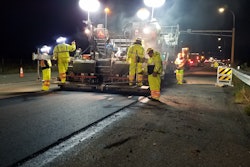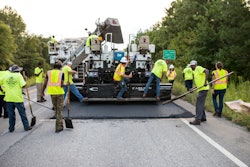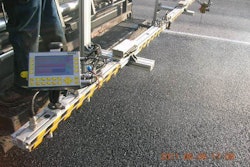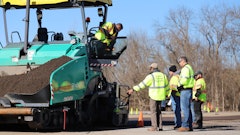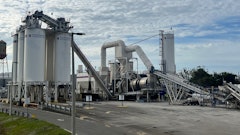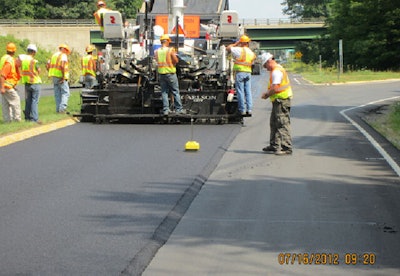
The beauty of America is that all 50 states can make decisions independently, but operate within a united framework for national security, success and innovation. It’s a concept that includes a database of interconnected and shared information translatable for local consumption and application from East to West and everywhere in between.
The same set of proven environmental, economic, energy, health and safety statistics are accessible, reviewable, decipherable and dissectible across the country to allow individual state agencies to make decisions that best apply to their specific needs and goals based on tested and validated results.
Now there is a coordinated effort underway by Cargill, the National Center for Asphalt Technology (NCAT) at Auburn University and Minnesota’s MnROAD partnership to bring standardization and data equivalency across different pavement performance testing methods employed by individual states.
The organizations, all working toward the same result, have very distinct profiles in different parts of the eco-system of the asphalt pavement industry that represent perspectives from industry, suppliers, academia and agencies.
Most in the industry agree that current performance validation strategies prompting 50 states to employ their own testing methods is not a long-term sustainable process. It is inefficient at best and very expensive at worst, severely impacting budget outlays for many states that don’t have sufficient resources.
The data from all of the individual state studies exist, but in current form the information gathered from elsewhere often isn’t directly translatable or transferable to another state’s local conditions and situations. For example, studies and data from rejuvenated higher recycle mixes at one location, for a variety of reasons, might not be translatable in current form for another agency’s local specification development.
Connecting the Data Dots
One of the partnership’s main missions is to utilize the large body of field-supported data created to identify relationships between various tests and performance thresholds for rejuvenated high-recycled HMA. This may allow agencies to better translate their own results, or compare and contrast their data with data from across the country. Such a capability may help minimize the amount of local testing necessary, saving time, cost and effort.
The objective is not to gauge whether one test method itself is better than another test method or that one state’s proven testing technology excels over that utilized by another jurisdiction, according to the researches. Their aim is to help support the entire industry’s efforts to establish uniform performance definitions across various tests and methods, in order to tie together the wealth of information and experience already available through separate pockets of data and studies, and speed up adoption of new and innovative advancements that improve pavement performance.
“We want to make sure that even though agencies are all looking at different tests, criteria and parameters according to their local environment, performance results and experiences are translatable to other regions,” explains Hassan Tabatabaee, global technical manager—Asphalt Solutions at Cargill.
“By developing more robust links and relationships between different tests and conditions, one can enable others to look at a collection of separate data points in a more unified way, pooling our knowledge and information to accelerate how we’re moving forward in the adoption of new technologies. It may not be a unified specification, but it’s a unified understanding of where the performance bars are and what we’re all striving for.”
Standardizing, or at the very least establishing some equivalence among performance thresholds and validations so that each new technology or method doesn’t have to be validated 50 times over, would go a long way toward helping states be more confident in innovative approaches.
At the end of the day, it means building and maintaining top quality roadways that better serve the public and deliver the comfortable experience that drivers demand and have come to expect.
Apples to Asphalt
This new research approach also helps get the industry beyond one of its biggest innovation hurdles—a hesitation by many agencies and contractors to jump into something new for fear of being wrong. Many agencies are on board with the general idea of performance-based design and allowing roadbuilders to innovate to meet performance, but they may not feel that they have all of the right data yet to do so comfortably and reliably.
They often are aware that other states may have successfully conducted testing on a design mix using unfamiliar methods, but to raise their comfort with the data they need the methods and results to be apples to apples with their own familiar testing protocols, so the result is a slow process as they do their own validations from scratch.
Often both the agency and contractors are onboard with the idea of exploring change and innovative ideas, however many times it is the assignment of the inherent risks associated with trying something new that impedes change.
“We can be smart about how we manage uncertainty and risk during this transition,” Tabatabaee adds. “By providing the right data relationships and providing the right comparisons between various performance thresholds, we hope to help remove some of the uncertainty and perceived risk, so states that are increasingly becoming interested in adopting innovative technology can see a credible path forward to implementation by adopting some measure of performance for contractors to maintain and meet, while allowing them to innovate.”
To get there, the researchers are working to develop models and relationships between material and design parameters and various measures of performance from across the country. It all comes down to not just compiling good data, but to properly “contextualize” the data to determine how results from one source, can be compared with other data sources to support the agency decision-making process.
Calling All Contractors
While industry, academia and agency representation is onboard through Cargill, NCAT and MnROAD, the group hopes to increase participation from pavement contractors who ultimately end up on the front lines of the roadway construction.
“It’s absolutely essential,” says Tabatabaee. “At the end of the day almost any type of pavement innovation has to be adopted by the contractor. It’s going to be much more effective if the contractor comes in and is part of the process from the very beginning. They should be at the table now and champion such efforts because at the end of the day, it’s the willing contractor that has to really deploy the innovation.”
Contractors who are interested in rejuvenation or working towards standardized pavement performance testing methods or would like additional information can contact Cargill’s Anova Asphalt Solutions team at [email protected] or 800-227-4455.




